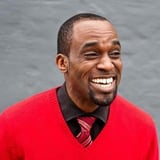Summary
User research is more than answering questions—it’s about driving real business impact. But how do we ensure that our work doesn’t just inform but truly influences decision-making? Too often, research teams focus on the “research ask” without fully aligning with the deeper business need. In this session, Dr Nikki Smith, Experience Research Manager at Enterprise Mobility, will explore how experience researchers can act as the connective tissue between insights and action, ensuring that research isn’t just a function—but a strategic driver of business decisions. She’ll discuss how to build business thinking into research practice, collaborate across teams, and communicate impact in ways that resonate with stakeholders. Drawing on real-world experiences from Enterprise, she’ll cover how research teams can shift their role from reactive support to proactive leadership, ensuring their insights don’t just land but lead.
Key Insights
-
•
Researchers frequently feel misunderstood, mishandled, and misused due to a disconnect between research language and business expectations.
-
•
Defining outcomes solely by KPIs can limit researchers because they rarely own all metrics relevant to stakeholders.
-
•
A strong research narrative clarifying what questions research answers helps align expectations within organizations.
-
•
Senior leaders often categorize research work into discovery (what is the problem) and evaluation (did we solve it).
-
•
Showing connective tissue and partnership across cross-functional teams enhances the strategic influence of research.
-
•
Researchers should position themselves as consistent strategic partners who contribute evidence-based decision making.
-
•
Making research rigor relatable requires simplifying complex findings into clear, customer-centered stories relevant to business priorities.
-
•
Visual storytelling and clear snapshots of problems and expected outcomes make insights more accessible to non-researchers.
-
•
Authentic company objectives can be discerned by observing organizational conversations and collaboration across teams.
-
•
Asking the right questions—understanding objectives, assumptions, and expected use of insights—is crucial for effective research impact.
Notable Quotes
"Researchers feel misunderstood, mishandled, and misused—no one really knows when to come to us or what questions we can answer."
"We’re never gonna know all the metrics important to all stakeholders unless we only work on one product, but we deliver outcomes in a different way."
"Senior leaders think about research in two buckets: discovery, telling me what the problem is, and evaluation, telling me how to solve it."
"The best partnerships depend on a mere common goal but a shared path of equality, desire, and no small amount of passion."
"You cannot start and you cannot end this without the talent that research teams bring to the table."
"Sometimes our research can feel intangible and inaccessible—not because answers aren’t there, but their impact isn’t clear."
"Just tell me what you’re telling me—executives want clear and simple narratives, not complexity and jargon."
"When you know yourself, you are empowered, you accept yourself, and you are invincible."
"I can tell when something is real when multiple teams are talking about it and planning together."
"The only thing harder than figuring out what you’re gonna do is figuring out why you’re doing it."
Or choose a question:
















More Videos

"Change is fundamentally a design problem and therefore change can be designed."
Maria GiudiceBecoming a Changemaker by Leading with Design
March 29, 2023

"I was my biggest obstacle, saying no to myself because I thought I didn’t have the right experience."
Joseph Williams Nepani Birondo Matt Readman Allison NgoUnlocking impact and influence through inclusive hiring in research
December 16, 2021

"Before transitioning designers, we reviewed and agreed on a prioritized list with all executive leaders."
Patrick CommarfordDesign Staffing for Impact
January 8, 2024

"My Roomba vacuums while I’m at work. It does its work out of my attention."
Christopher NoesselAI of the now: Designing for Agents
July 31, 2024

"The prototype caught fire because the motor and axle were misaligned — my design didn’t consider the physical realities."
Dan WillisEnterprise Storytelling Sessions
June 8, 2016

"Showing is better than telling, especially when it comes to equity."
Emily Williams Nora FioreWhen UX Research and Institutional Racism Collide: A Case Study
March 12, 2021

"Drawing a boundary was the hardest part for me, like stopping drawing the systems."
Sarah FlamionComplex Problem? Add Clarity by Combining Research and Systems Thinking
March 31, 2020

"Designers are thrown into environments with experts that have decades of experience, and we have to come up with something relevant really quickly."
Russell Blair Milan GuentherKilling the blank page
June 5, 2024

"People we think are powerless often actually have a lot more power than we expect."
Jennifer Strickland Lesley-Ann NoelFireside Chat: How Design Addresses a World on Fire
March 18, 2022
















